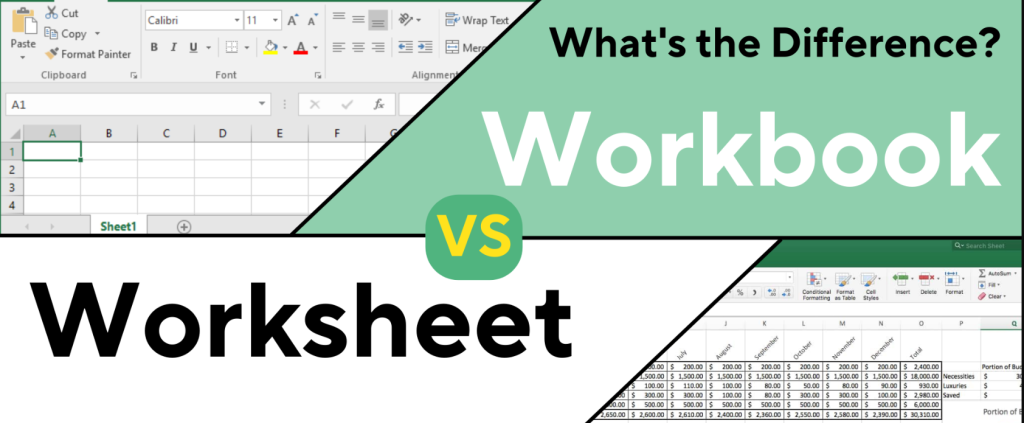Microsoft Excel is a versatile spreadsheet software that aids in data organization, analysis, and presentation. Two fundamental terms often used interchangeably but with distinct roles in Excel are “workbook” and “worksheet.” In this blog post, we will unravel the disparity between workbook and a worksheet and shed light on their individual functionalities.

Understanding the Basics:
- Workbook:
- A workbook in Excel is the overarching file that contains one or more worksheets.
- Think of it as a binder that holds together related sheets, providing a comprehensive structure for managing and organizing data.
- Workbooks are often saved with a .xlsx extension and can house a multitude of information, making them the primary container for Excel data.
- Worksheet:
- A worksheet is a single spreadsheet or tab within a workbook.
- It consists of a grid made up of rows and columns where users can input and manipulate data.
- Worksheets are the canvas where calculations, data analysis, and chart creation take place, offering a focused space for specific tasks.
Key Differences:
- Scope of Organization:
- Workbook: Serves as the overarching file, providing a container for multiple related worksheets.
- Worksheet: Represents a single tab within a workbook, dedicated to a specific set of data or calculations.
- File Format:
- Workbook: Typically saved with a .xlsx extension, encapsulating the entire collection of worksheets and their data.
- Worksheet: Is part of the workbook file and doesn’t exist as a standalone file.
- Functionality:
- Workbook: Facilitates the organization of related information and the management of multiple sets of data.
- Worksheet: Acts as the canvas for performing calculations, creating charts, and organizing data within a specific context.
Choosing the Right Term:
Understanding the difference between a workbook and a worksheet is crucial for efficient Excel use. When working on a specific set of data or task, you are likely interacting with a worksheet. However, if you’re dealing with a collection of related sheets, you’re working within a workbook.
Conclusion:
In the realm of Excel, workbooks and worksheets play distinctive roles, providing users with a powerful platform to organize, analyze, and present data. By grasping the nuances of these terms, users can navigate Excel more adeptly, optimizing their workflow for enhanced productivity and data management.
Discover unbeatable value and enhance your productivity by purchasing Microsoft Office at the lowest price available on our website.


